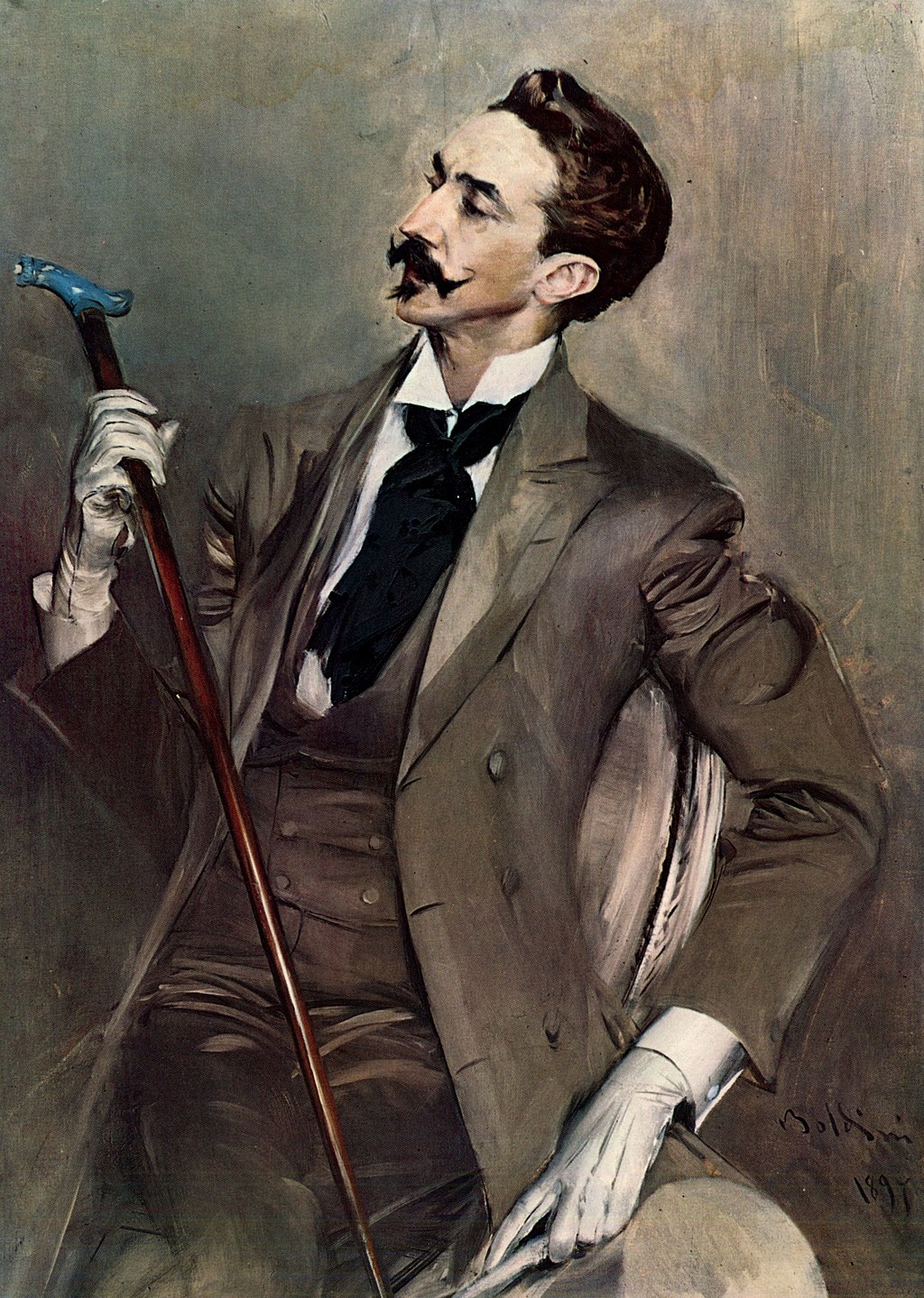In the ever-shifting landscape of fashion and cultural expression, there exist figures who defy convention, challenge the status quo, and embody an elusive sense of sophistication. These individuals, known as dandies, have long captured the imagination of writers, artists, and commentators alike. In this essay, we delve into the world of dandyism, tracing its origins and exploring its evolution through the centuries, all the while observing the unique ways in which dandies have shaped and been shaped by the societies they inhabit.

The dandy, with his meticulously curated attire and carefully crafted persona, has long been a source of fascination and intrigue. From the impeccably dressed Beau Brummell, who famously declared that « if John Bull turns around to look at you, you are not well dressed, » to the flamboyant and controversial Oscar Wilde, these figures have transcended mere fashion to become symbols of a particular cultural moment. But what drives the dandy? And how has this enigmatic figure managed to maintain its allure across the centuries?
« if John Bull turns around to look at you, you are not well dressed »
Beau Brummell
Join me on a stylish journey through the history of dandyism, as I uncover the forces that gave rise to these sartorial rebels and examine their enduring impact on fashion, culture, and society at large. From the drawing rooms of Regency-era London to the avant-garde circles of 20th-century Paris, and on to the digital realms of the 21st century, the story of the dandy is a captivating tale of self-expression, artistic rebellion, and the quest for individuality in an ever-changing world.
Introduction
The notion of elegance, the artful presentation of oneself, has long been associated with the mysterious and alluring figure of the dandy. Emerging from the shadows of history, these individuals have carved out a niche for themselves in the annals of time, embodying a spirit of rebellion against the conformity of their respective societies. Often seen as peacocks of the sartorial world, dandies defy the mundane, transforming the act of dressing into an art form and a powerful expression of self. As we embark on this exploration of the history of dandies, we will delve into the origins and motivations behind this phenomenon, as well as examine how dandyism has evolved and adapted to the changing cultural tides.
One might ask why it is important to study the history of dandies. The answer lies not only in their impact on fashion and social conventions, but also in the way they represent the broader cultural shifts and transformations that have taken place throughout history. Dandies have consistently been at the forefront of pushing the boundaries of self-expression, challenging societal norms, and promoting a sense of individuality that is both timeless and distinct. By examining the trajectory of dandyism, we gain insight into the complexities of human expression and the power of fashion as a form of cultural rebellion.

As we journey through the history of dandies, we will trace their emergence from the early inklings of dandyism in literature and history, to their rise as prominent figures in the 18th and 19th centuries, the period that saw dandyism flourish and become synonymous with the likes of Beau Brummell, Charles Baudelaire, and Oscar Wilde. Venturing into the 20th century, we will observe the transition of dandyism as it adapts to the shifting cultural landscape, encompassing figures such as Cecil Beaton, Noël Coward, and those at the forefront of the punk, goth, and new romantic subcultures. Finally, our exploration will bring us to the contemporary dandy of the 21st century, an era in which the internet and social media have reshaped the landscape of self-expression, offering new possibilities and challenges for the dandy in the modern world.
The story of the dandy is not one of mere aesthetic frivolity. At its core, dandyism represents a struggle for authenticity and self-realization in a world that often seeks to suppress individuality. The dandy, with his carefully chosen attire and studied mannerisms, is a powerful symbol of the human desire to resist conformity and assert one’s distinctiveness. In an age of mass-produced clothing and a seemingly endless parade of fleeting trends, the dandy stands as a beacon of timeless style and a reminder of the importance of cultivating one’s own unique identity.
As we delve into this fascinating history, we will discover that dandies have not only contributed to the evolution of fashion but have also played a significant role in shaping the cultural and social fabric of their times. These figures have inspired countless writers, artists, and fashion enthusiasts, leaving an indelible mark on the world around them. By studying the history of dandies, we not only pay tribute to these enigmatic figures but also gain a greater understanding of the complexities and nuances of human expression throughout history.
As we embark on this exploration of the world of dandyism, we invite you to join us in celebrating the enduring legacy of these iconic trendsetters. Together, we will navigate the currents of history, traversing the centuries in search of the essence of the dandy and the myriad ways in which they have left their mark on the tapestry of human culture. The journey promises to be an engaging and enlightening one, offering new perspectives on the power of self-expression and the significance of individuality in a world that often demands conformity. As we journey through the past and into the present, we will discover that the dandy is not a relic of bygone days, but rather a timeless symbol of the human desire to assert one’s unique identity and challenge societal expectations.
In this essay, we will delve into the different facets of dandyism, examining the lives and legacies of iconic figures from various eras and locales, and exploring how their impact reverberates through fashion, literature, art, and popular culture. As we trace the path of dandyism, we will uncover the rich tapestry of influences and inspirations that have shaped this fascinating phenomenon, revealing the intricate connections between the dandy, the wider cultural milieu, and the evolution of society itself.
From the opulent salons of 18th-century Europe to the bustling streets of 20th-century Harlem, and from the enigmatic figures of Oscar Wilde and Charles Baudelaire to the gender-fluid trailblazers of the modern era, the story of the dandy is a testament to the enduring allure of self-expression and the transformative power of fashion as a form of social and artistic resistance.
As we embark on this enthralling journey, we will not only encounter the captivating figures who have embodied the spirit of dandyism, but also delve into the broader social, cultural, and political contexts that have shaped their lives and legacies. Through this exploration, we will come to appreciate the dandy as a powerful symbol of individuality and defiance, an emblem of the endless human quest for self-realization and personal expression.
So, join us as we venture into the world of dandyism, celebrating the indomitable spirit of these iconic trendsetters and the impact they have had on the tapestry of human culture. As we journey through the annals of history, we will discover that the essence of the dandy is not confined to a particular era or locale, but rather resonates across time and space, offering a potent reminder of the transformative power of self-expression and the enduring appeal of individuality.
A. Definition of dandies
The term « dandy » often conjures up images of impeccably dressed men with a penchant for flamboyance and an air of nonchalance. However, the true essence of a dandy lies not solely in their attire, but also in their attitude and approach to life. At its core, dandyism is a way of being, an expression of individuality that transcends fashion and embraces a broader aesthetic and philosophical sensibility. Rooted in the desire to assert one’s unique identity, dandyism is a celebration of personal style, a rebellion against conformity, and an affirmation of the power of self-expression. Though the term has evolved over time, the spirit of dandyism remains consistent: a commitment to cultivating one’s distinctive presence in a world that often prizes homogeneity.
B. Importance of studying the history of dandies
The history of dandies offers a unique window into the evolution of fashion, culture, and society across different periods and regions. By examining the trajectory of dandyism, we can gain valuable insights into the shifting attitudes towards self-expression, the role of fashion as a vehicle for social commentary, and the complex interplay between individuality and conformity. Moreover, the study of dandies allows us to explore the ways in which these figures have influenced and been influenced by their respective societies, shedding light on the broader cultural and historical contexts in which they emerged.
Studying the history of dandies also holds relevance in our contemporary world, as it underscores the enduring appeal of self-expression and the power of fashion to communicate ideas, challenge norms, and transcend cultural boundaries. As we face an increasingly globalized and interconnected world, the story of the dandy reminds us of the importance of cultivating a sense of individuality and embracing the beauty of our unique identities.
C. Brief overview of dandies throughout history
The rich history of dandies spans centuries and continents, with each era witnessing the emergence of distinctive figures who embody the spirit of dandyism while adapting to the cultural context of their times. This brief overview provides a glimpse into the evolution of dandies throughout history, setting the stage for a more in-depth exploration in the subsequent sections of this essay.
- Early inklings of dandyism: In the 17th and early 18th centuries, we find the precursors to the dandy in figures such as the French courtier Chevalier de Méré and the English poet Lord Rochester. These early examples hint at the emergence of a distinct persona characterized by an emphasis on personal style, wit, and a subtle defiance of societal norms.
- The rise of the dandy in the 18th and 19th centuries: This period witnesses the true flowering of dandyism, with prominent figures like Beau Brummell, Charles Baudelaire, and Oscar Wilde epitomizing the spirit of the dandy. Their refined sense of style, coupled with their intellectual and artistic pursuits, elevates dandyism to a cultural phenomenon that captures the imagination of their contemporaries and leaves a lasting impact on the worlds of fashion, literature, and art.
- Dandyism in transition in the 20th century: As the world undergoes rapid cultural and social changes, dandyism adapts and evolves. Early 20th-century dandies like Cecil Beaton and Noël Coward embody a modern interpretation of dandyism, while the mid-century sees the influence of jazz and post-war culture reshaping the notion of the dandy. By the late 20th century, dandyism finds new expressions in subcultures such as punk, goth, and new romantic, signaling a resurgence of the dandy’s spirit of individuality and defiance.
- The contemporary dandy in the 21st century: Navigating an increasingly interconnected and digital world, the contemporary dandy embraces the opportunities and challenges presented by the internet, social media, and modern fashion trends. These dandies continue to redefine the boundaries of self-expression, carrying on the enduring legacy of dandyism while adapting to the ever-changing landscape of our times.
This overview offers a glimpse into the fascinating journey of dandies throughout history, setting the stage for the more detailed exploration that follows. As we delve into the intricacies of dandyism and the figures who have shaped its evolution, we celebrate the power of self-expression and the unique individuals who dared to defy convention in pursuit of their own distinctive identities.


Commentaires récents